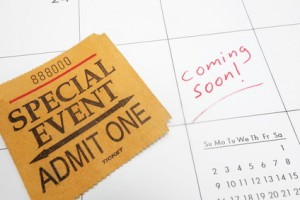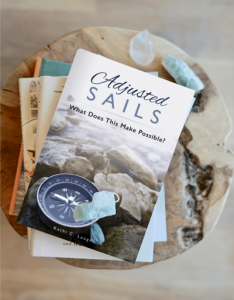 Throughout life we become conditioned to want, even arguably need a mark in time to look forward to. It’s not that now isn’t important. Now is crucial as it is the only thing that has the power to create next. But there is still something that draws us in when there is a spot on the horizon that we look forward to reaching.
Throughout life we become conditioned to want, even arguably need a mark in time to look forward to. It’s not that now isn’t important. Now is crucial as it is the only thing that has the power to create next. But there is still something that draws us in when there is a spot on the horizon that we look forward to reaching.
Perhaps it started with that last school bell (yes I am dating myself but you know what I mean!) before summer break. Or maybe it was a holiday that became a particular favorite and you paced your calendar each year to see that date come into view. For some, family vacations were planned as adventures or traditions that were the pinnacle experience year after year.
Because I was a music student and performer for the majority of my growing up years, I can still clearly remember recitals and looking forward to programs and performances. There was a focus and a planning. But more than that, there was a sense of reaching a kind of joy. I counted the days.
The idea of something to look forward to has even made it into many definitions of happiness. Best-selling author and poet Rita Mae Brown is quoted as saying that “Happiness is pretty simple. You need someone to love, something to do and something to look forward to.”
As we move through our lives, what qualifies as something to look forward to changes as we change. In some cases, that may be a transition to much simpler things. In others, it might be that we are ready for something more significant. What matters is to realize the need to identify and define. We cannot look forward to something we have not claimed for ourselves.
Recently I went through a period of time where I recognized that I was growing restless. While I wasn’t dissatisfied with my life overall there was a sense of becoming somewhat bored with it. I was happy in my work, comfortable with my strategies for the future and growing into healthy and nurturing relationships with friends. But something was definitely still missing. I took to my journal and began exploring this and I realized that while I was gaining knowledge for my work, I was not learning new things in my personal life. I also recognized that my calendar had become my guidepost day to day but there were no stars in the pages ahead.
I have come to the conclusion that if we are not growing personally and counting the days to something, we are missing some of life’s sweetest pleasures. And I started working on those stars.
Those stars are guiding lights that keep us moving through the routine with anticipation. Something as simple as a new class has been a highly effective starting point for me. Each Saturday morning I escape! And I am sitting at a pottery wheel or working at the table with clay and creating something of value simply because it is my creation. Learning a new skill, meeting new people and getting stars on my calendar every week.
What about you? My desire for you is that you have many stars in your calendar that you look forward to. What are you looking forward to this week? This month? This year? Where are the stars on your calendar?
Live well. Get some stars!













